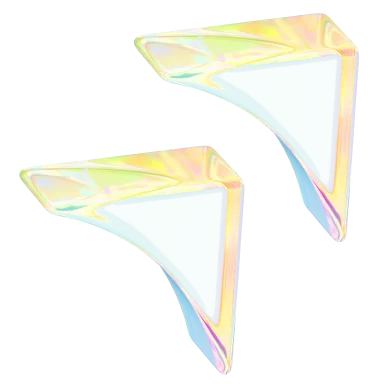What Are Motion Graphics & How Do They Differ from Animation? 💥
- Design & Creative

Learn what motion graphics are, how they differ from animation, and how to become a freelance motion graphic designer in our comprehensive guide.
Motion graphics and animation, often used interchangeably, are distinct mediums in the realm of visual storytelling. At its core, motion graphics are digital graphics that move, typically used to communicate ideas or information in a dynamic way, often accompanied by sound. These graphics primarily focus on giving life to abstract shapes, text, and images for short-duration projects like advertisements or promotional videos.
Animation, on the other hand, often revolves around character-driven narratives or environments, creating a semblance of life in objects or characters.
While both harness movement to captivate audiences, understanding their nuances helps in choosing the right medium for specific creative objectives.
In this guide, we’ll explore what motion graphics are and offer tips on how to get started as a freelancer in the world of motion graphic design.

What are motion graphics, and what are they used for? 👾
Motion graphics combines technology, graphic design, and animation to breathe life into static visuals, creating compelling narratives that deeply resonate with viewers. Using modern tools and understanding of human cognition, artists create immersive experiences spanning various fields, including entertainment, education, and advertising.
With the future steering toward augmented and virtual realities, motion graphics stand at the frontier of limitless creative exploration, promising a rich tapestry of dynamically evolving visual storytelling.
Main uses of motion graphics ☝️
- Advertising and marketing: Motion graphics vitalize brand narratives, creating informative and evocative commercials.
- Corporate presentations: Motion graphics transform corporate presentations, making complex data visually engaging and comprehensible.
- Education and e-learning: In education, motion graphics simplify complex ideas into engaging, understandable visuals.
- Entertainment: Motion graphics elevate visual storytelling, introducing mesmerizing special effects in movies, TV shows, and music videos.
- Digital signage and events: Motion graphics rejuvenate digital signage and events, transforming static displays into dynamic visual narratives.
- Social media content: Motion graphics amplify social media content by infusing it with vibrant visuals and stories.
Motion graphics examples 🔍
- Web design and mobile applications: In its web design and mobile applications UI elements, Google utilizes subtle animations that come alive with responsive graphics, enhancing user engagement.
- Music videos: Music videos often turn to motion graphics to create visually compelling narratives. A stellar example is "Strawberry Swing" by Coldplay, where an entire storyline is created using dynamic and vivid motion graphics.
- News and television broadcasting: Networks like CNN and MSNBC leverage motion graphics to enhance their storytelling through vibrant tickers and dynamic data representation, breaking complex narratives into visually digestible segments.
- Documentary filmmaking: Motion graphics skillfully convey detailed narratives, such as in the documentary "An Inconvenient Truth." The documentary utilizes motion graphics to illustrate the impacts of climate change vividly.
- Advertising and marketing campaigns: Apple often uses motion graphics in its advertising campaigns through dynamic product features and functionalities presentations in its commercials.
- E-learning and educational content: Khan Academy, a renowned e-learning platform, makes educational content more engaging and understandable through animated diagrams and interactive videos.
Best practices for a successful career in motion graphics 💯
Embarking on a career in motion graphics requires creativity and a deep understanding of the industry's tools and trends. Here are six essential practices that aspiring motion graphics designers should adopt.
- A solid grasp of foundational design principles enables designers to create engaging and harmonious compositions.
- Mastery of industry-standard motion graphics software, such as Adobe After Effects, is key to bringing creative visions to life with precision.
- Constantly adapting to ever-evolving trends and technologies is essential to stay competitive.
- Creating a comprehensive portfolio showcasing various techniques and styles reflects a designer's prowess and creative versatility to prospective clients.
- Active engagement in industry networks can foster fruitful collaborations, presenting opportunities to learn from experienced professionals and to partner on enriching projects.
- Strong client management and communication skills help understand client expectations and facilitate smooth project executions.
The history of motion graphics 🕰️
The intricate landscape of motion graphics has witnessed a phenomenal journey, shaped continuously by the imaginative spirit of the motion graphics designer and the evolution of motion graphics software.
Origins: The birth of a dynamic medium 🐣
In the early 20th century, the seeds of motion graphics were sown with pioneering attempts to blend art and moving images. These efforts marked the nascent stage of a medium with boundless potential, setting a foundation for dynamic and immersive artistry.
The television era: Opening new visual horizons 📺
The advent of television in the 1950s and ’60s created a new playground for motion graphics designers. Innovations in the ’70s, including rudimentary motion graphics techniques, fostered a rich visual culture, enhancing the broadcast landscape with vibrant title sequences and logos, thereby elevating creative standards.
The digital epoch: Motion graphics software emergence 💾
The digital age, characterized by the ’80s and ’90s, saw motion graphics software becoming central to the creative process. Tools like Adobe After Effects became vital, facilitating a surge of creativity as designers leveraged technology to craft rich narratives.
The Netflix era: Elevating user experience 💻
The emergence of Netflix in the 2000s redefined the role of motion graphics, utilizing it extensively for intros and promotions. This era highlighted the innovative potential of motion graphics in enhancing user experiences and crafting immersive narratives in the digital age.
Present day: Exploring uncharted territories 🚢
Today, the motion graphics industry, backed by sophisticated software, navigates new avenues, including AR and VR technologies. This is a time of unprecedented innovation, pointing toward a future where visual narratives can offer even richer, more immersive experiences.
Motion graphics vs. animation: When to use which 🤔
Despite sharing history and several features, motion graphics and animation maintain unique identities in the visual communication landscape.
Animation creates the illusion of motion through a series of still images displayed in rapid succession. This age-old technique has been used to craft everything from early cartoon reels to modern-day CGI masterpieces.
To further comprehend the divergence between motion graphics and animation, let’s take a look at the key differences that separate them:
Motion graphics 🫨
- Usually straightforward and have a visually appealing manner
- Often less complex than animation
- Quicker to produce, requiring less time and fewer resources
- Easily integrated into a variety of media and platforms
Animation 🖍️
- Focuses more on narrative and storytelling
- Can be deeply intricate, weaving rich narratives with complex characters and plots
- Can be time-consuming and resource-intensive, particularly for detailed projects
- Offers greater flexibility in exploring creative narratives
Motion graphics are best leveraged when the goal is to highlight important information or data, offering clarity and conciseness in representation. A motion graphics designer with the right graphics software can excel in illustrating points and emphasizing essential facts clearly and compellingly.
Conversely, when the objective is to forge a deep emotional connection with the audience, offering rich narratives, animation stands as the ideal choice. It provides a canvas to weave stories that evoke emotions and connect with viewers on a profound level.
What kind of career opportunities are available in the motion graphics industry? 🧑💻
The industry offers diverse career paths for a motion graphics designer, including advertising, film production, and corporate communications roles. Opportunities extend to working on music videos, commercials, and educational materials. The growth of digital platforms has further opened avenues in the gaming and virtual reality sectors.
Showcase your motion graphics expertise with Contra 🤲
In the ever-evolving digital landscape, motion graphics serve as a compelling tool to captivate and convey messages swiftly. Their blend of design, movement, and concise storytelling positions them as a sought-after medium for diverse projects.
Whether you're an Independent seeking to hone your motion graphics skills or a business on the lookout for top-notch designers, Contra is your platform. Join the Contra community today and propel your motion graphics journey to new heights.

2D vs. 3D Animation: Choosing the Style That’s Right for You 🫵












